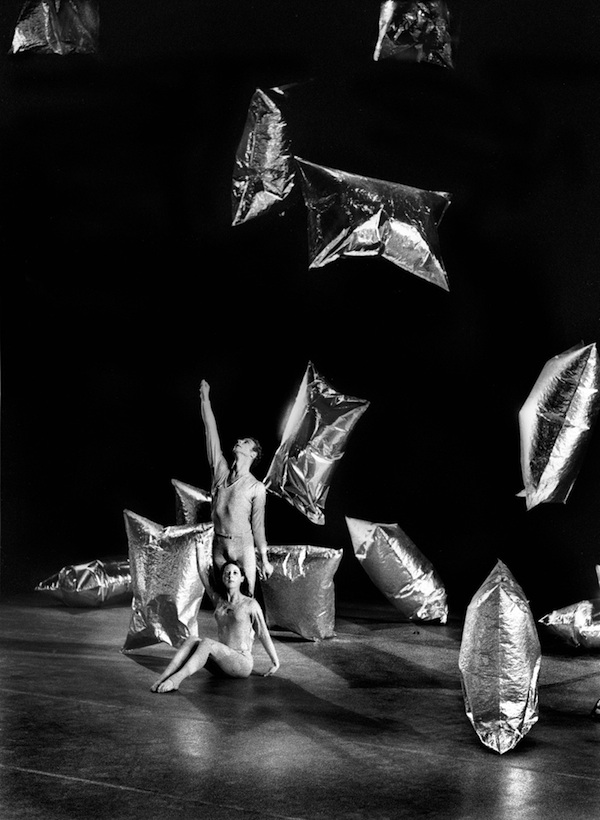
James Klosty’s inside view on Merce Cunningham: 65 Years
By Melissa Harris, Aperture Foundation James Klosty traveled with and photographed the Merce Cunningham Dance Company (MCDC) from 1967 to 1972. As the partner of dancer Carolyn Brown, he had unprecedented access to Cunningham, John Cage, and the Company as a whole, and his stunning photographs—first published in his 1975 book, Merce Cunningham—provide a unique, riveting, and intimate insight into both the work, and life on tour. His photographs will be featured in the epub, Merce Cunningham: 65 Years, funded by Knight, and to be released by Aperture Foundation and the Cunningham Dance Foundation this coming spring. Here Klosty, an actor by trade, briefly discusses his time on the road with the Company.
Melissa Harris: What was it like, touring with the Merce Cunningham Dance Company (MCDC)? James Klosty: It was wonderful to be so near to work and to artists I so respected. Merce himself was a slight difficulty because he had not yet made his peace with being photographed. We had an unspoken mutual agreement that he would more or less tolerate my hanging around, but I often felt it was less rather than more.
MH: What is it like to see the same Cunningham dance repeatedly? How does the camera mitigate the experience? JK: Seeing it again and again while photographing is not at all the same as simply watching it. The latter is preferred. While photographing, you are not really appreciating the work. You are looking for moments that speak for the whole but that gets in the way of seeing the whole. As a lover of the work I don’t recommend it.
MH: Had you always been a photographer, or did you start with MCDC? JK: Well I had enjoyed taking pictures since high school. I was the “official photographer” for my high school yearbook. But I had never been involved in any serious project before. I was not out to express myself. I felt strongly that Merce’s work was not being taken seriously in America and wanted to produce a book that would draw more attention to it. That was my sole motivation.
MH: You’ve been working on a John Cage project — tell us a little bit about your relationship with John, and about this project… I know that this year is the John Cage centennial.
JK: I would like to think I am being honest when I say John and I were friends, or became friends during the period I was working on the Merce book. Essentially John was always there. And to the same degree that Merce disliked being photographed and wanted to maintain an opaque shell, John LOVED being photographed because John liked connecting, not just with me but also with the world at large. All my photographs of John are from the same period as my photographs of Merce and the company.
MH: Is there any relationship between your acting, and your work as a photographer? JK: Yes. As a photographer you are observing and capturing points in time whose presentation, the photograph, plays out outside of time. A photograph, expressive as it may or may not be, is fixed, unchanging, and in that sense fossilized; whereas as an actor you are also observing the life process, but more inwardly, and what you present, having come to terms with those observations, plays out in time and through time and is very much alive… as alive as a dance and just as perishable, assuming you are working on the stage rather than in film.
MH: I’d like to close Jim, by quoting you from 1974: “What has absorbed me most…–what to some extent absorbs all those in contact with Merce Cunningham—is the current almost palpably surrounding the man, charging his work, informing every aspect of that world which, by his presence, he defines.” –Your photographs express that vitality with great intensity. We are all so lucky for the open sesame it provides into one of many extraordinary periods in Cunningham’s life and work. Thank you!
Recent Content
-
Artsarticle ·
-
Artsarticle ·
-
Artsarticle ·

